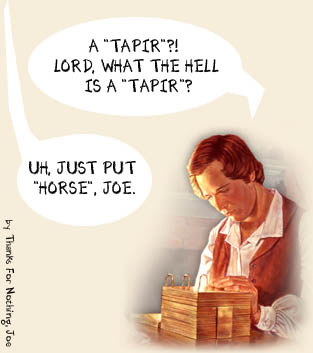Tobin wrote:The problem I have with this is the fact that Joseph Smith didn't translate the Book of Mormon.
That is one of several hypotheses and favored by Royal Skousen. I disagree and have published my reasons. Until you know those reasons, we will have to agree to disagree.
Certainly God could have described an animal that looked sort of like a horse instead of selecting the word horse.
I do not profess the understanding of God that you have. I can only go on evidence.
Brant Gardner wrote:2) Iron blades. . .
This has the same problem as I noted above. And there is a second problem, I purposefully identified the Jaredites instead of the Nephites/Lamanites because their weapons were laying around rusting. Clearly demonstrating they were made of iron.
And that they were in the process of rusting away, assuming again precision on translation. It isn't a question of whether or not an iron sword might have rusted, but whether we would consider it necessary that we find a continuation of their use into times from which we might recover remains. The Olmec used a lot of iron ore. At the moment, it is assumed that it was in some non-smelted form. Still, there was a lot of iron in use. We don't really know what they did with it.
Brant Gardner wrote:3) Reformed Egyptian...
Again, I selected my example carefully. I don't believe Mayan is inconsistent at all with the Book of Mormon. After all, the Lamanites would have needed a writing system since only the Nephites had the records.
We have a fundamental difference in the way we read the text. I can't see post Zarahemla Nephites with a Maya based language, and the glyphs wouldn't be used the same way with a different language (though there is some interesting information from Justeson that suggests that some Maya glyphs might have been borrowed from an epi-Olmec writing system).
I certainly don't agree that the Lamanites wouldn't have had a writing system. You are assuming divine accuracy for a statement that in any other historical record would clearly be hyperbole. I prefer to be more consistent about the text as an ancient document that should be read as though it were.
